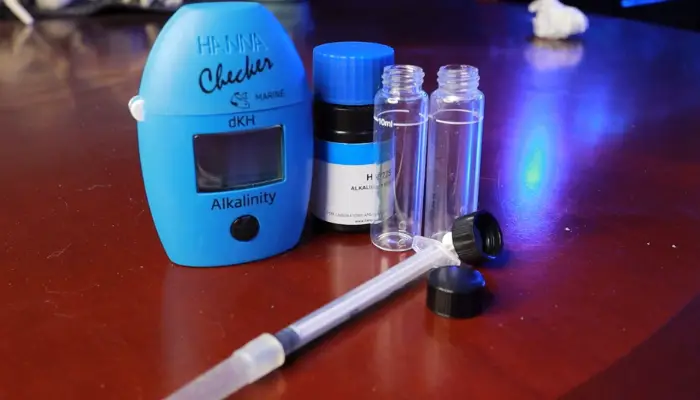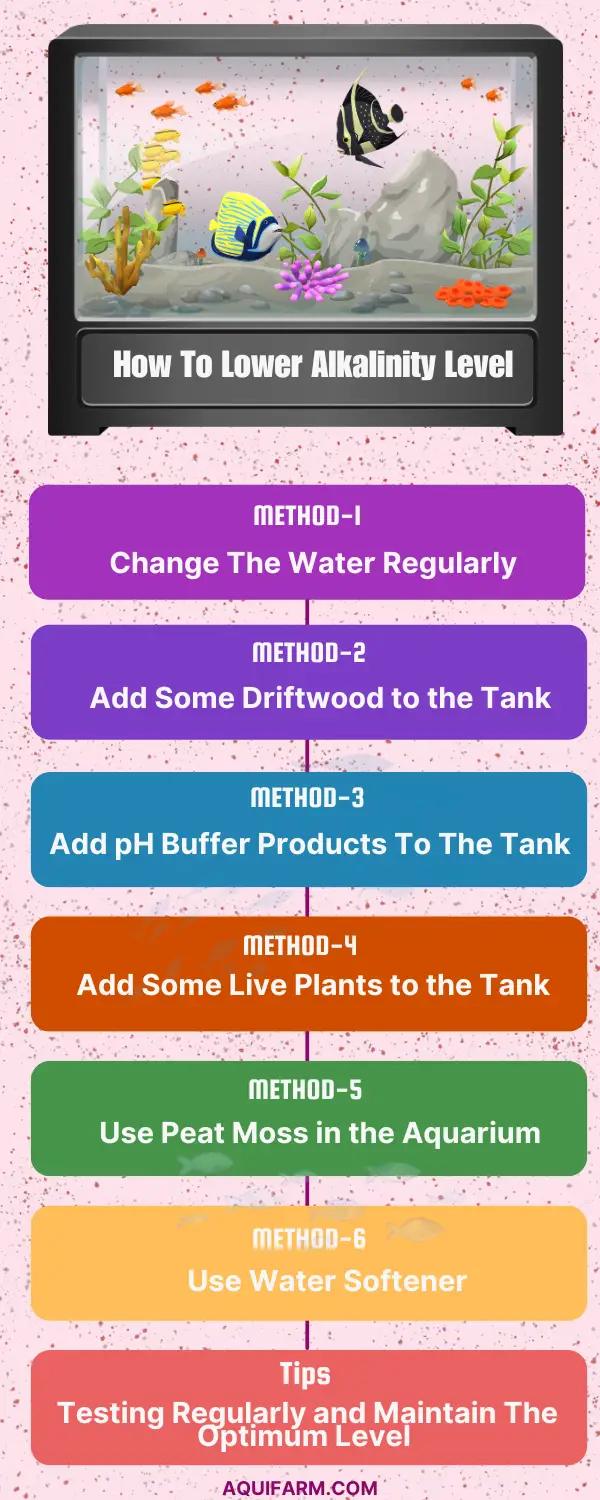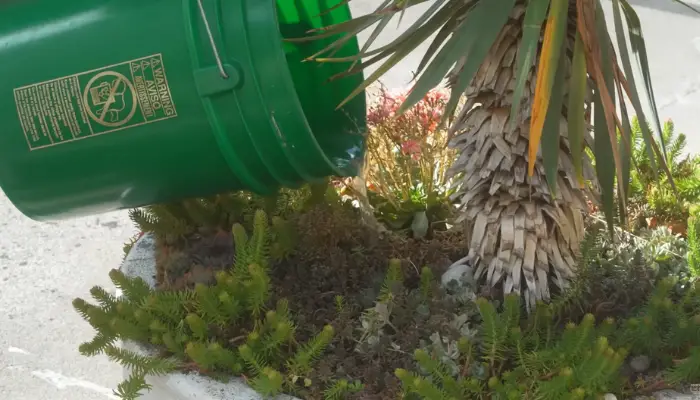7 Best Ways To Lower The dKH Level In The Tank
The alkalinity level or dKH level is one of the basic duties of an aquarist. No matter if your tank is a large one or a small one, you still have to keep an eye on this level because this is one of the main criteria to keep the fish happy in a healthy tank environment.
Now, I know the whole thing seems a bit confusing, especially to beginners. Because I sure was untidy about this at first when I first started keeping an aquarium.
This is why I am putting all my experience into words in this article to help you understand everything about the dKH levels. Moreover, this article will inform you about the following things–
- What is the dKH level?
- Why should we maintain the dKH value?
- How to lower the alkalinity level
- What’s the optimum dKh level for different aquariums
- How to lower the alkalinity with vinegar
There are many different ways to lower the alkalinity level in your fish tank. We are going to talk about the most effective ones here. So, let’s jump right in–
What Is The dKH Value?

The term dKH stands for “degree of carbonate hardness”. Basically, it’s a measure to determine the carbonate and bicarbonate concentration in water.
Carbonate hardness or alkalinity acts as a buffer that prevents any sudden pH changes that can be harmful to fish and other aquatic livestock. So, the dKH value tells us how stable the pH of your tank water is.
Why Should We Keep The dKH Value To Optimum?
It’s very important to maintain an optimum value of dKH or carbonate hardness because it acts as a buffer. This means it helps to prevent any sudden changes in the pH that can cause stress, disease, and even death to the fish in your aquarium.
Besides, if the pH is too high the nitrifying bacteria won’t be able to convert the toxic ammonia to nitrate which is less harmful to the fish. As a result, the biological filtration system in your aquarium will eventually shut down.
Another thing is, if you have shell-forming organisms such as snails in your aquarium, the proper dKH value is even more important. We know that these organisms need proper levels of calcium to maintain their shell formation. But if there is an improper level of dKH, the availability of calcium ions will be hampered.
You can monitor your tank dKh level very easily with a dKH testing kit.
So, in a nutshell, monitoring and maintaining the dKH value is very much recommended in order to keep the tank environment healthy.
Now, let’s see how we can do this–
How To Lower Alkalinity Level Or dKH in a Fish Tank Effectively

1. Change The Water Regularly

Changing the water regularly is a very effective and easiest way that can help to lower the dKH. Every week change around 10-20% of the tank water with low mineral water or distilled water. However, make sure the water you are replacing matches the current temperature of the tank.
Besides while changing water make sure to remove the uneaten food or other debris also which is floating. One of the best ways to lower the dKh is by using reverse osmosis or RO water filter system.
Because of all the filtering RO water has a very low mineral and salt content and it provides carbonate hardness as well.
However, only using the Ro water might not just be the best idea. Because the aquarium water still needs some nutrients and minerals. So, it’s best to mix the RO water with regular tap water to balance out the alkalinity.
You can get a reverse osmosis water filter system in your home to make sure you are always using the best water in your fish tank.
2. Add Some Driftwood to the Aquarium
You see driftwoods contain tannins that help to reduce the pH levels and lower the dKH levels in the water. Besides, it will also give your freshwater aquarium a more natural and aesthetic look too
First, choose the right piece of driftwood that is suitable for your aquarium, and pick a properly cured one without any signs of rot and decay.
But before adding the driftwood to your tank, it’s important to prepare it properly. For that, soak it in a container filled with water so that excess tannins are removed. Also, in this way, the driftwood gets saturated and doesn’t start floating after adding it to the tank.
Besides, driftwood can release excessive tannins and make your tank water look dark. So change the water of the container of driftwood every day. Let it soak for several days until the water stays clear. Then it’s ready to add to the tank.
However, avoid placing the driftwood too close to the aquarium glass because it can scratch the glass and block the view of the aquarium as well.
3. Add pH Buffer Products To The Aquarium
You can use pH-lowering products in your reef tank that help you to neutralize the carbonate levels in the water. You can try API AQUARIUM SALT Freshwater Aquarium Salt. Aside from lowering the pH, it helps the fish to recover from diseases faster and improves their respiration too.
You have to use it while you change the water following the package directions because if you use too much of the product, it can harm the fish. You need to test the tank water pH before using the product to make sure the pH level doesn’t drop too much.
4. Add Some Live Plants to the Aquarium
This Is the most natural way of lowering the alkalinity level in your tank. You see, plants uptake carbon dioxide during photosynthesis. As a result, carbonates are removed from the tank automatically.
Besides, plants also absorb excess mineral nutrients that build up in the tank and cause high levels of alkalinity. Make sure to choose some aquatic plants that are compatible with your tank size and set up proper lighting conditions to help their photosynthesis.
There are many aquatic plants to choose from including java moss, amazon sword, sweater sprite, dwarf hairgrass, pygmy chain sword, dwarf sagittaria, dwarf lily, Anubis, and so on. Research and check what plant is most compatible with your fish species.
5. Use Peat Moss in the Aquarium
This is another natural method of lowering the dKH level in the fish tank. Peat moss is actually decomposed plant parts that are usually used in the soil for gardening.
It contains tannin that can help lower your tank water’s pH level. It also reduces the hardness of water which is very beneficial for some types of fish.
Get high-quality peat moss that is made for use in aquariums. Don’t use peat moss that contains any additives, chemicals, or fertilizers because these can harm your fish.
Now wash the dust particles of the peat moss in a bucket very thoroughly. And then place the washed peat moss in a fine-mesh bag. Make sure the bag is correctly tied so that any loose particles of peat cannot enter the aquarium system.
After that place the peat moss bag in a suitable position in the tank where it gets enough water flow. It will slowly release tannins and other organic acids in the water and lower the dKH levels.
However, with time the peat moss will lose its effectiveness. In this case, replace the peat moss every 4-6 months to maintain the acidity condition of your tank water.
There’s one catch though. Peat moss can turn the tank water into brownish which may look a little unpleasant. Well, in this case, you can use activated carbon to make the water look clearer.
6. Use Water Softener
You can use water softener that will remove the excess minerals including the ones that cause the high levels of pH in the water. The water softeners usually contain some chemicals that attract the minerals and as a result, it helps to control the alkalinity.
You can use a portable water softening device in your home and it will remove the alkaline ions as water runs through it. Attach a hose to the device and connect the other end to the filter. It will fill the tank with softened water.
However, if this does not seem feasible to you, you can use a good water conditioner in your aquarium by following the label directions in the bottle.
7. Maintain The Optimum Level By Testing Regularly
Last but not definitely the least. This is the most basic method of maintaining the alkalinity level. You see, It’s very important to check the pH level of the aquarium on a regular basis. Otherwise maintaining the optimum condition won’t be easy.
This is because the alkalinity level fluctuates a lot. It can suddenly change due to changing water, adding new decorative materials, or even adding new fish in the tank.
So checking the dKH level frequently will help you to stay ahead of the problem and will help you to keep your tank fish healthy and disease free.
You can test your tank with a water testing kit to get an accurate reading of the alkalinity level.
What’s The Optimum Range Of The DKH
The alkalinity or carbon hardness (dKH) range depends on whether your aquarium has saltwater or freshwater systems.
If it’s saltwater, then the recommended range is usually 8-12 dKH. This range helps to support the growth of corals and other organisms in the reef tank.
However, in freshwater aquariums, the alkalinity level is a bit different. The range mostly is from 4-8 dKH. Though certain species can have their own different preferences.
So, what I usually do is, research the preferences of the fish that I’m about to buy and get the dKH level adjusted to their liking.
Let’s look at the dKH levels of ponds and different aquariums. It will definitely come in handy while monitoring their alkalinity levels.
| Aquarium type | dKH level |
| Tropical aquarium | 4-8 dKH |
| Shrimp tank | 2-5 dKH |
| Pond habitat | 4-8 dKH |
| Marine saltwater aquarium | 8-12 dKH |
| Reef tank | 7-12 dKH |
| Planted tank | 3-8 dKH |
| African cichlid tank | 10-18 dKH |
What Happens If I Don’t Maintain The Optimum DKH Level?
If you don’t maintain the alkalinity level according to the fish species you have in the tank you are most likely to face the following issues–
- The pH level will become unstable and it will cause stress to the fish and other aquatic organisms.
- If the alkalinity level is not within the range, the immunity system of your fish will weaken and they will be more susceptible to diseases.
- The coral skeleton in your reef tank will stop growing and the coral structures won’t develop.
- Another downside is, the algae can thrive in unstable pH conditions so this excess growth of algae will ruin the beauty of the tank and cause diseases to the fish.
This is why it’s so important to test your water parameters regularly and take proper adjustments to maintain the alkalinity level.
How To Use Vinegar To Lower The Alkalinity In Reef Tank?
Adding vinegar to lower the alkalinity in your reef tank is a very commonly practiced way. But you have to be careful while doing this because the amount of vinegar you put in will have a great impact on the water chemistry of your tank.
Start with a low dose at first and then you can gradually increase the amount while you keep monitoring the dKH level of your tank at the same time. I mostly prefer to add less than 1 ml of vinegar in a 20 gallon tank every day.
And I check the dKH level with a test kit after a few days. If I still find that the dKH level hasn’t lowered much, I slightly increase the dosage.
The best result comes if consistent timing is maintained when adding the vinegar. Pick a time of the day and try to add the vinegar at the same time every day.
But whenever the tank dKH level starts to drop suddenly I stop using the vinegar for a while. Because adding vinegar can alter the pH level of your tank. So, if the stability isn’t maintained the fish can feel stressed in this condition.
Frequently Asked Questions (FAQs)
Will High Alkalinity Kill Fish In An Aquarium?
Yes! Unfortunately, too high alkaline levels can make it difficult for the fish to breathe as a result the fish will rapidly get stressed out and eventually get killed. This is why monitoring the dKH or alkalinity level is so important.
Will Alkalinity Decrease On Its Own?
High alkalinity levels will decrease eventually by itself over time. But this could take a while and meanwhile, it can cause much harm to the fish. So, it’s best not to rely on the tank to lower the alkalinity level naturally.
Does Lemon Juice Lower Alkalinity?
Yes, lemon juice can reduce alkalinity. Since lemon juice is acidic in nature it can be added to water to increase the acidity of the tank. However, it should be used with caution because too much lemon juice can cause damage to the fish.
Conclusion
When trying to lower the dKH you have to consider the effect of the tank’s internal ecosystem. Because sudden and drastic changes can cause stress to the fish and even kill them.
So, it’s very important to regularly test your tank water’s parameters and maintain the optimum dKH level. In most cases, it’s better to opt for more than one method to get the dKH in an optimum condition more rapidly and efficiently.
This is where this article will come in handy because I have included the top 7 ways to lower the dKH level from my own experience. I hope you’ve found this article easy and helpful. For any further queries hit the comment section below and share this article with your other aquarist friends too.
And don’t forget to let us know what you would like me to write about next on your social media page.
- How To Grow Basil Hydroponically – Turn Your Aquarium Into An Herb - December 1, 2025
- Hydroponic Pepper Plants: Your Aquarium’S Secret To A Spicy Harvest - December 1, 2025
- Hydroponic Nutrient Solution For Basil – Your Aquarist’S Guide To - December 1, 2025
